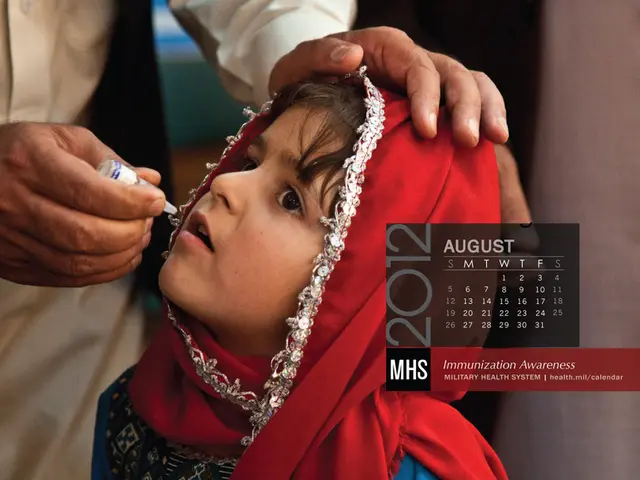Connection Between Breast and Ovarian Cancer: Identified Factors and Links
Redefined and Restructured Version
Let's dive into the strong links between breast cancer and ovarian cancer, primarily due to shared genetic factors. Here's a lowdown on what you need to know about these two cancers.
The Breast-Ovarian Connection: Genes Matter
BRCA1 and BRCA2 genes are the stars of the show when it comes to the connection between breast and ovarian cancer. Women carrying pathogenic variants in these genes are at significantly higher risk for both types of cancer. These genes serve a crucial role in repairing DNA damage, and their dysfunction increases the risk of cancer[1][4].
Beyond BRCA1 and BRCA2, other genes like ATM, CHEK2, and PALB2 are also linked to increased breast cancer risk, with some implicated in ovarian cancer risk too, albeit less strongly than BRCA genes[2][3].
Shared Hormonal and Lifestyle Risks
Hormonal Factors
- Hormone Replacement Therapy (HRT): Use of hormone therapy during menopause, especially combined estrogen and progestin, escalates breast cancer risk. The connection to ovarian cancer is less clear, but some evidence suggests a possible connection[2][4].
- Reproductive History: Being childless, late age at first birth, and never breastfeeding are risk factors for both breast and ovarian cancer[2][4].
- Early Menarche and Late Menopause: Longer exposure to ovarian hormones (due to early menstruation and late menopause) increases the risk of both cancers[4].
Lifestyle Factors
- Obesity: Higher Body Mass Index (BMI) in postmenopausal women is linked to increased breast cancer risk and may also boost ovarian cancer risk[2][5].
- Alcohol Consumption: Regular alcohol use is associated with higher breast cancer risk, while data on ovarian cancer are less consistent[2].
- Physical Inactivity: Inactivity is associated with a higher risk for both cancers due to its impact on hormone levels and inflammation[5].
- Family History: A family history of breast or ovarian cancer is a powerful risk factor for both types, especially when linked to inherited genetic mutations[1][4].
Strategies for Reduction and Management
Genetic Testing and Counseling
- Genetic Screening: Testing for pathogenic variants in BRCA1, BRCA2, and other relevant genes can help identify high-risk individuals[1][3].
- Risk-Reducing Surgery: Prophylactic mastectomy and salpingo-oophorectomy (removal of ovaries and fallopian tubes) can significantly reduce cancer risk in women with high-risk mutations[1][4].
- Enhanced Surveillance: Regular clinical breast exams, mammograms, and pelvic imaging/ultrasounds help detect cancers early in high-risk populations[3][4].
Lifestyle Modifications
- Healthy Weight: Managing weight through diet and exercise can reduce the risk for both breast and ovarian cancer, particularly for postmenopausal breast cancer and possibly ovarian cancer[2][5].
- Limit Alcohol: Reducing alcohol intake helps lower breast cancer risk; moderation is recommended[2][5].
- Breastfeeding: Breastfeeding is protective against both breast and ovarian cancer[2][4].
- Physical Activity: Exercise lowers the risk for both breast and ovarian cancer[5].
Hormonal and Reproductive Strategies
- Oral Contraceptives: Use of oral contraceptives is protective against ovarian cancer and may reduce breast cancer risk in some populations, although this is debated and may vary by type and duration of use[4].
- Short-term Hormone Therapy: If hormone therapy is necessary, using the lowest effective dose for the shortest possible time can help reduce risk[2][4].
Key Takeaways
Breast and ovarian cancers share several genetic and lifestyle risk factors, including BRCA1 and BRCA2 genes, hormonal influences, and obesity. These risks can be managed or reduced through genetic testing, lifestyle modifications, and, in high-risk cases, risk-reducing surgeries and enhanced surveillance[1][2][4].
- The shared genetic factors that link breast cancer and ovarian cancer are primarily attributed to BRCA1 and BRCA2 genes, which increase the risk for both types of cancer in women with pathogenic variants.
- Other genes like ATM, CHEK2, and PALB2 are also connected to increased breast cancer risk, with some having implications for ovarian cancer risk as well.
- Hormone Replacement Therapy (HRT) during menopause, particularly combined estrogen and progestin, significantly escalates breast cancer risk, and although the connection to ovarian cancer is less clear, some evidence suggests a possible link.
- Being childless, late age at first birth, and never breastfeeding are risk factors for both breast and ovarian cancer due to hormonal influences.
- Longer exposure to ovarian hormones (early menarche and late menopause) can increase the risks for both breast and ovarian cancer due to hormonal factors.
- Managing weight through diet and exercise, reducing alcohol intake, breastfeeding, and maintaining physical activity are lifestyle modifications that can lower the risks for both breast and ovarian cancer within the framework of health-and-wellness and women's health.








